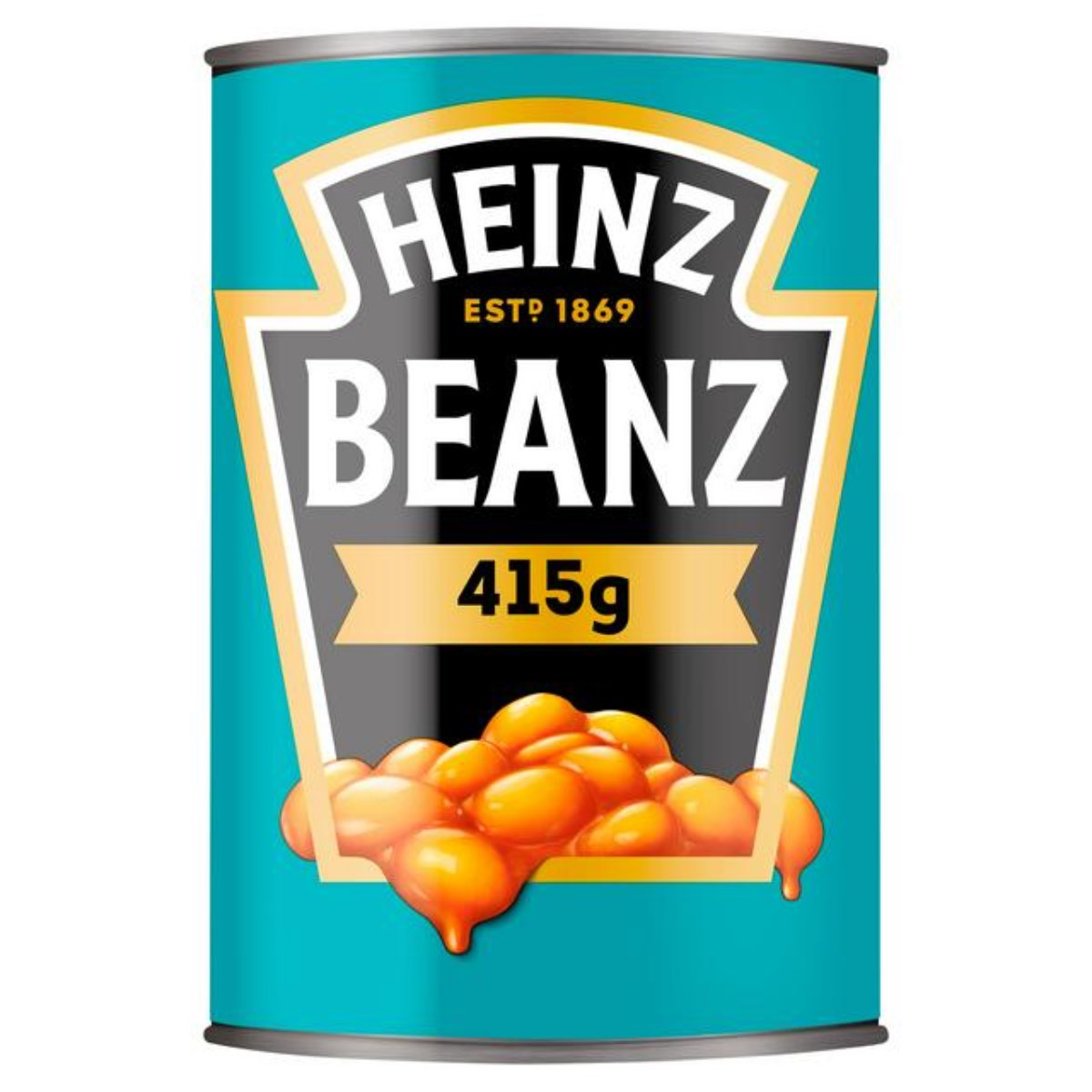Here we take a look at the Heinz Baked Beans environmental footprint. By understanding the environmental impact of products it is our hope that we can all make more informed decisions when it comes to reducing our own effects on our planet.
Buy Heinz Baked Beans by clicking here.
Heinz Baked Beans Environmental Footprint

| Aspect | Description |
|---|---|
| Materials Used |
|
| Manufacturing Process |
|
| Packaging |
|
| Carbon and Water Footprint |
|
| Environmental Efforts |
|
| Additional Resources |
|
Environmental Impact
Materials Used
Heinz Baked Beans are comprised of several key materials:
- Beans: The primary ingredient, typically dry navy beans, are a source of plant-based protein and require less water and resources compared to animal protein sources.
- Tomatoes: Tomatoes form the base of the sauce, and while some regions may use fresh tomatoes, Heinz Baked Beans often utilize canned tomatoes, extending their shelf life and potentially reducing spoilage waste.
- Sugar: Sugar adds sweetness and helps balance the tangy tomato flavor. The specific type of sugar used can vary depending on location and recipe.
- Spices and Flavorings: A variety of spices and flavorings are used to create the signature Heinz Baked Beans taste. These may include mustard, onions, and Worcestershire sauce.
- Canning Materials: Heinz Baked Beans are traditionally packaged in steel cans. Steel is a highly recyclable material, allowing for minimal waste if disposed of properly.
Manufacturing Process
The manufacturing process for Heinz Baked Beans involves several steps:
- Ingredient Sourcing: Beans, tomatoes, and other ingredients are sourced from farms and suppliers. Heinz has committed to sustainable sourcing practices for some ingredients, aiming to reduce the environmental impact of these early stages.
- Processing and Preparation: Ingredients are cleaned, processed, and cooked according to the recipe. Heinz strives for energy efficiency during these stages, potentially utilizing technologies to reduce their environmental footprint.
- Canning and Packaging: The prepared beans and sauce are filled into steel cans, sealed, and labelled. Heinz promotes recycling of their steel cans as a way to minimize waste.
Packaging
Heinz Baked Beans are primarily packaged in steel cans. Steel is a significant advantage from an environmental perspective:
- Recyclable: Steel is one of the most recyclable materials available. A high percentage of steel cans are recycled into new products, minimizing waste and resource extraction for new cans.
- Durable: Steel cans offer excellent protection for the food, minimizing spoilage and food waste.
While the steel cans are a positive step, Heinz may be able to explore further packaging improvements in the future, such as using recycled content in the can material or investigating alternative, sustainable packaging options.
Heinz Baked Beans Carbon and Footprint Water Footprint
- Water Footprint: Compared to animal-based protein sources like meat, beans have a generally lower water footprint. On a scale of 1 to 10, Heinz Baked Beans would likely score between 3 and 5.
- Carbon Footprint: While beans themselves have a relatively low carbon footprint, factors like cultivation practices, manufacturing energy use, and transportation contribute to the overall impact. Considering these factors, Heinz Baked Beans would probably fall somewhere in the range of 5 to 7 on a scale of 1 to 10.
C02 Emissions from Making Heinz Baked Beans
Estimating the exact CO2 emissions for a single can of Heinz Baked Beans is a complex task. However, we can make an educated guess based on the footprint of the beans themselves:
- Beans: On average, cultivating and processing 1 kg of dry beans is estimated to emit around 2.5 kg of CO2.
- Can Weight: A typical Heinz Baked Bean can weighs about 0.418 kg.
- Beans per Can: Assuming beans make up roughly 70% of the can’s weight, that’s about 0.418 kg/can * 0.7 = 0.293 kg of beans per can.
Estimated CO2 from Beans: Based on these figures, the beans in a can of Heinz Baked Beans would contribute roughly 2.5 kg/kg * 0.293 kg ≈ 0.73 kg of CO2.
Important Considerations:
This estimate only considers the CO2 emissions from the beans themselves and does not include:
- Growing and processing other ingredients (tomatoes, sugar, etc.)
- Manufacturing the can
- Transportation of ingredients and finished product
- Refrigeration during storage and transportation
The actual CO2 footprint of a can of Heinz Baked Beans is likely higher than the 0.73 kg estimated for the beans alone.
Lifecycle Assessment
A lifecycle assessment (LCA) considers the environmental impact of a product throughout its entire lifespan, from sourcing raw materials to production, transportation, use, and disposal. Understanding the carbon footprint of Heinz Baked Beans requires examining each of these stages:
- Production: This includes cultivating the beans, tomatoes, sugar, and other ingredients, along with manufacturing the can and processing the food. Agricultural activities contribute greenhouse gas emissions through machinery use, fertilizer application, and transportation. Food processing and metal can manufacturing are also energy-intensive processes.
- Transportation: Beans, tomatoes, and other ingredients travel from farms to processing facilities, and then the finished product is shipped to distributors and retailers. Each leg of this journey contributes to the carbon footprint through the use of trucks, trains, and ships.
- Use: The environmental impact during the use phase is relatively minor for Heinz Baked Beans. However, boiling the beans does require energy, typically from electricity or natural gas.
- Disposal: Empty Heinz Baked Bean cans are typically made from recyclable steel. However, the recycling process itself also uses energy. If cans are not recycled and end up in landfills, they can take many years to decompose.
Carbon Emissions Reduction Efforts
Heinz recognizes the environmental impact of their products and has implemented several initiatives to reduce their carbon footprint. These include:
- Sustainable Sourcing: Heinz is committed to sourcing some of their ingredients from sustainable farms that employ practices to reduce their environmental impact. This can include reducing fertilizer use, optimizing water usage, and implementing soil conservation techniques.
- Energy Efficiency: Efforts are being made to improve energy efficiency in Heinz manufacturing facilities. This can involve using more efficient equipment, adopting renewable energy sources, and optimizing processes to reduce overall energy consumption.
- Recycling Programs: Heinz promotes recycling of their steel cans. Metal is one of the most recyclable materials, and recycling significantly reduces the environmental impact compared to producing new cans from scratch.
While specific details about carbon offsetting programs for Heinz Baked Beans are not readily available, Heinz does participate in carbon offset projects across their wider product range. These projects support initiatives that reduce greenhouse gas emissions elsewhere, such as forestation efforts or renewable energy projects.
Buy Heinz Baked Beans by clicking here.
Environmental Certifications
At this time, information regarding specific environmental certifications for Heinz Baked Beans themselves is not publicly available. However, Heinz does belong to the Heinz company, which has undertaken broader sustainability initiatives across their product range. These initiatives may indirectly impact Heinz Baked Beans.
Here’s what we do know:
- Heinz Sustainability Efforts: The Heinz company has established sustainability goals that include reducing their environmental footprint through initiatives like energy efficiency improvements in manufacturing facilities and responsible sourcing practices for some ingredients.
- External Recognition: Heinz has received recognition for their sustainability efforts from organizations like “World Wildlife Fund (WWF): https://www.worldwildlife.org/“.
While specific certifications for Heinz Baked Beans are not currently available, the broader sustainability efforts of the Heinz company do demonstrate a commitment to environmental responsibility.
Sustainability Features
Heinz Baked Beans, while not perfect from an environmental standpoint, do offer some noteworthy sustainability features:
- Plant-Based Protein: Beans are a sustainable source of protein, requiring less water and resources to cultivate compared to animal protein sources like meat. This translates to a lower environmental footprint for the core ingredient in Heinz Baked Beans.
- Durable Packaging: Steel cans offer excellent protection for the food, minimizing spoilage and food waste. Food waste reduction positively impacts the environment by reducing the overall environmental impact of food production.
- Recyclable Packaging: Steel is one of the most recyclable materials available. A high percentage of steel cans are recycled into new products, minimizing waste and reducing the need to extract virgin resources for new cans. This translates to lower energy consumption and resource depletion.
- Energy Efficiency Efforts: The Heinz company strives for energy efficiency during manufacturing processes. While specific details for Heinz Baked Beans may not be available, these efforts can contribute to a lower overall environmental footprint.
While there’s always room for improvement, these sustainability features demonstrate that Heinz Baked Beans can be a part of a more environmentally conscious diet.
Conclusion
Heinz Baked Beans offer a convenient and delicious source of plant-based protein, but like most products, their production does have an environmental impact. Understanding this impact allows us to make more informed choices.
The lifecycle assessment of Heinz Baked Beans highlights areas like cultivation of ingredients, manufacturing processes, transportation, and packaging. While the beans themselves have a relatively low carbon footprint, other stages contribute to the overall environmental impact.
Heinz acknowledges the importance of sustainability and has implemented initiatives to reduce their environmental footprint. These include sustainable sourcing practices, efforts to improve manufacturing energy efficiency, and promoting the recycling of their steel cans.
As consumers, we can all play a role in a more sustainable future. By considering the environmental impact of the products we purchase and choosing options with sustainable features like plant-based protein and recyclable packaging, we can contribute to a positive change. While Heinz Baked Beans may not be perfect from an environmental standpoint, they do offer some sustainability benefits, and conscious consumption can help us make informed choices for ourselves and the planet.
Buy Heinz Baked Beans by clicking here.
Additional Resources
- Environmental Impact:
- How Cooking Beans Can Reduce Your Environmental Impact: Cooking Beans to Reduce Your Environmental Impact – A Legume a Day: https://www.cambridge.org/core/journals/renewable-agriculture-and-food-systems/article/sustainability-assessment-and-optimization-of-legumes-production-systems-energy-greenhouse-gas-emission-and-ecological-footprint-analysis/8504658A632FE643A5ED73C830AA3FB2
- Lifecycle Assessment: https://en.wikipedia.org/wiki/Life-cycle_assessment
- Carbon Footprint:
- Carbon Trust: https://www.carbontrust.com/
- How to Calculate Your Carbon Footprint: https://www3.epa.gov/carbon-footprint-calculator/
- Sustainability:
- World Wildlife Fund (WWF): https://www.worldwildlife.org/
- The National Sustainable Agriculture Information Service (ATTRA): https://attra.ncat.org/
Eco-Friendly Alternatives:
For a completely plant-based meal, you can consider:
- Dry beans cooked from scratch with your own spices and flavorings. This allows for complete control over ingredients and reduces packaging waste.
- Lentil soup: Lentils offer a similar protein punch to beans and can be prepared in various ways.
Complementary Products:
- Brown rice: A healthy and nutritious whole grain that pairs well with beans for a complete protein source.
- Fresh vegetables: Adding chopped vegetables to canned beans increases nutrient content and reduces reliance solely on processed ingredients.
Disclaimer
This report estimates the environmental impact of Heinz Baked Beans based on publicly available information and assumptions about ingredient sourcing, manufacturing processes, and average transportation distances. The actual environmental footprint may vary depending on specific production methods, ingredient origins, and individual consumer practices.
This report is intended to be informative and does not represent an endorsement of Heinz Baked Beans or any other product. There is no affiliation with Heinz or any other company mentioned in this report.
Take a look at more product environmental impacts.


